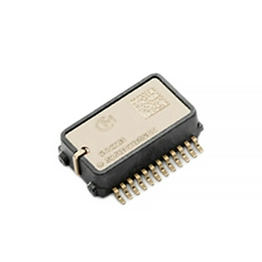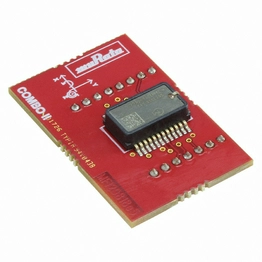Distance Sensors
Results:Distance Sensors Results:
Comprehensive
Price Priority
Stock Priority
Image
Part Number
Manufacturer
Description
Availability
Unit Price
Quantity
Operation

Murata Manufacturing
SPI 3V 25.2mA 3.6V(DC) SOIC-24 glue mount 15mm*8.5mm*4.3mm
Quantity: 50
Ship Date: 14-19 working days
50+ $73.1136
100+ $67.5108
-
+
Ext. Price: $3655.68
MOQ: 50
Mult: 50
SPQ: 1

1+ $88.4415
10+ $88.2357
-
+
Ext. Price: $88.44
MOQ: 1
Mult: 1
SPQ: 1

Murata Manufacturing
SPI 4.75V 29.5mA 5.25V SMD SMD mount 19.71mm*8.5mm*4.8mm
Quantity: 3
Ship Date: 3-5 working days
3+ $68.3068
30+ $66.2576
-
+
Ext. Price: $204.92
MOQ: 3
Mult: 3
SPQ: 3

Murata Manufacturing
Murata, Accelerometer, Gyro, surface mount, 3axis, Maximum operating temperature+125 °C
Quantity: 550
Ship Date: 7-12 working days
50+ $61.5775
100+ $60.042
150+ $59.2025
-
+
Ext. Price: $3078.87
MOQ: 50
Mult: 50
SPQ: 1

Murata Manufacturing
SPI 4.75V 29.5mA 5.25V SMD SMD mount 18.65mm*8.5mm*4.8mm
Quantity: 10
Ship Date: 3-5 working days
17+
10+ $70.4269
500+ $68.1178
1000+ $65.8087
-
+
Ext. Price: $704.26
MOQ: 10
Mult: 1

Murata Manufacturing
213μA 5V 0603 glue mount 1.6mm*800μm*800μm
Quantity: 825
Ship Date: 6-12 working days
100+ $0.1397
500+ $0.1157
1000+ $0.1098
2000+ $0.1051
4000+ $0.1021
-
+
Ext. Price: $25.14
MOQ: 180
Mult: 10

Murata Manufacturing
I²C,SPI 1.71V 2V 8-SMD SMD mount,glue mount 2.6mm*2.3mm*880μm
Quantity: 0
Ship Date: 7-12 working days
-
+
Ext. Price:
MOQ: 1
Mult: 1
SPQ: 1















